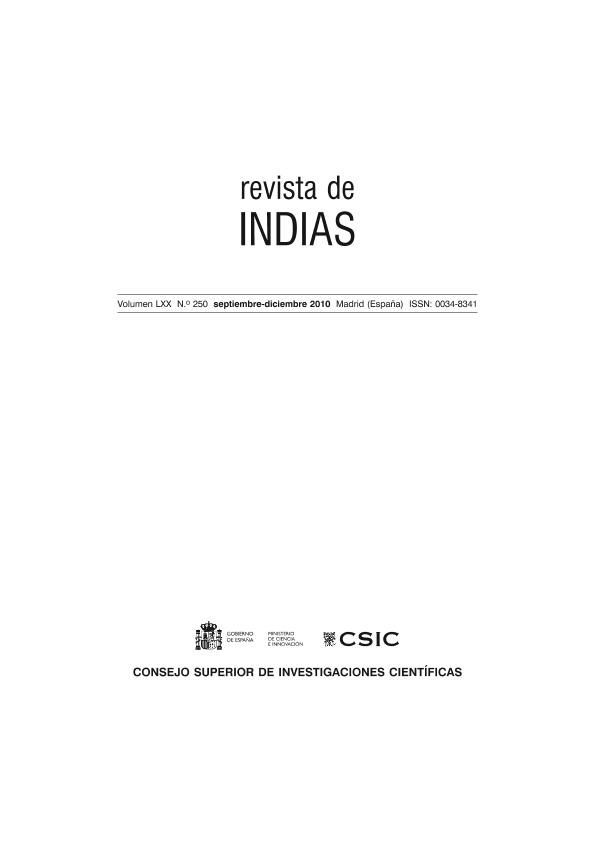Mostrar el registro sencillo del ítem
dc.contributor.author
Lida, Miranda

dc.date.available
2023-03-21T12:07:04Z
dc.date.issued
2010-12
dc.identifier.citation
Lida, Miranda; ¡A luján!: Las comunidades de inmigrantes y el naciente catolicismo de masas, 1910-1934; Consejo Superior de Investigaciones Científicas; Revista de Indias; 70; 250; 12-2010; 809-836
dc.identifier.issn
0034-8341
dc.identifier.uri
http://hdl.handle.net/11336/191137
dc.description.abstract
El objetivo de este trabajo es explicar el fenómeno de las movilizaciones de las comunidades de inmigrantes a Luján a partir de una consideración del cuadro general en el que se inscribían. Este cuadro ha de incluir el contexto general del catolicismo argentino hacia el Centenario, a fin de llamar la atención sobre el hecho de que los italianos no fueron los únicos ni los primeros que se movilizaron a Luján en procesiones cada vez más multitudinarias. Nos interesa focalizar, pues, la década de 1910, años en los cuales las procesiones y manifestaciones católicas se vuelven cada vez más numerosas. Usualmente, la historiografía suele ubicar la aparición del catolicismo de masas en la década de 1930, cuya expresión más elocuente se habría encontrado en la celebración del Congreso Eucarístico Internacional de 1934. Sin embargo, suele olvidarse que el primer evento de estas características se celebró en Buenos Aires en fecha tan temprana como 1916, cuando se celebró el primer Congreso Eucarístico Nacional. Éste se hizo eco de la naciente oleada de movilización católica de masas que vio la luz hacia el Centenario. De ella fueron partícipes, entre otros, los italianos.
dc.description.abstract
The objective of this work is to explain the phenomenon of the mobilizations of immigrant communities in Luján, based on a consideration of the bigger picture in which they took place, including the general context of Argentine Catholicism near the time of the Centennial. As such, it must be noted that Italians were not the only group, nor the first one, that organized processions in Luján that attracted increasingly greater numbers of participants. Our focus is on the decade of 1910, years in which Catholic processions and demonstrations were becoming every more numerous. Usually historigraphic studies tend to date the appearance of Catholicism of the masses from the decade of the 1930s, the most telling expression of which can be found in the celebration of the 1934 International Eucharistic Congress. Nevertheless, it is often forgotten that the first event of these characteristics was celebrated in Buenos Aires as early as 1916, with the first National Eucharistic Congress. This echoed the nascent wave of Catholic mass mobilizations that began at the time of the Centennial. Among others, the Italians were active in this wave.
dc.format
application/pdf
dc.language.iso
spa
dc.publisher
Consejo Superior de Investigaciones Científicas

dc.rights
info:eu-repo/semantics/openAccess
dc.rights.uri
https://creativecommons.org/licenses/by/2.5/ar/
dc.subject
BUENOS AIRES
dc.subject
CATHOLICISM
dc.subject
IMMIGRATION
dc.subject
POLITICS OF THE MASSES
dc.subject
SOCIAL MOVEMENTS
dc.subject.classification
Otras Historia y Arqueología

dc.subject.classification
Historia y Arqueología

dc.subject.classification
HUMANIDADES

dc.title
¡A luján!: Las comunidades de inmigrantes y el naciente catolicismo de masas, 1910-1934
dc.title
To luján!: The immigrant communities and the early catholicism of the masses, 1910-1934
dc.type
info:eu-repo/semantics/article
dc.type
info:ar-repo/semantics/artículo
dc.type
info:eu-repo/semantics/publishedVersion
dc.date.updated
2023-03-20T14:55:02Z
dc.identifier.eissn
1988-3188
dc.journal.volume
70
dc.journal.number
250
dc.journal.pagination
809-836
dc.journal.pais
España

dc.journal.ciudad
Madrid
dc.description.fil
Fil: Lida, Miranda. Consejo Nacional de Investigaciones Científicas y Técnicas; Argentina. Universidad Torcuato Di Tella; Argentina. Pontificia Universidad Católica Argentina "Santa María de los Buenos Aires"; Argentina
dc.journal.title
Revista de Indias

dc.relation.alternativeid
info:eu-repo/semantics/altIdentifier/url/https://revistadeindias.revistas.csic.es/index.php/revistadeindias/article/view/846
dc.relation.alternativeid
info:eu-repo/semantics/altIdentifier/doi/https://doi.org/10.3989/revindias.2010.026
dc.relation.alternativeid
info:eu-repo/semantics/altIdentifier/url/https://dialnet.unirioja.es/servlet/articulo?codigo=3362173
Archivos asociados
